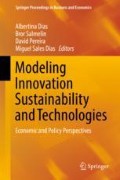Abstract
This paper intends to present a study about the costing of construction and operation of a particular branch of wastewater treatment: the use of activated sludge systems. There are three classical options of this process taken into consideration: extended aeration, conventional aeration with standard rate sludge digestion and conventional aeration with high rate sludge digestion and energy valorization.
In a large range of served population the treatment alternatives were evaluated, designed according to the current parameters.
The economic study of the treatment alternative used a geometrical pre-design, followed by measured work and quotation. This technical-economical modeling allows for the obtainment of interesting conclusions for the future design of wastewater treatment plants, whether they be new facilities or installations that need enlargement and/or rehabilitation.
Based on practical assumptions there’s a definition of the served population which brings advantages to the use of one or other alternatives, considering almost exclusively economical and financial criteria. The designer must have the responsibility to consider other factors that are discussed widely.
The purpose of the present study, being an academic dissertation, was to offer a general tool for decision. Since it was based on actual average market conditions, it may present deviations when applied to real situations, requiring adaptation from qualified technicians.
As it is well-known a wider range of contributing equivalent population should be served, with advantages, by a treatment that incorporates biogas use from mesophilic anaerobic digestion, to produce heat and/ or electricity. On the other hand, smaller equivalent populations use to their advantage extended aeration systems, without separated digestion. The question to answer was for what population there was no doubt about the decision to take without making too many design exercises.
In this study the range of populations where one or other system is obviously a good option are divided by a middle range, called “the doubt region”, that has to be studied with more accuracy, due to local and particular characteristics. This “doubt region” includes activated sludge systems with conventional aeration using standard rate anaerobic digestion or treated digestion or extended aeration ones, competing according to actual local conditions.
These qualitative results were expected, being the present dissertation a contribution to delimit these results in a quantitative way. It was concluded that the conventional aerated systems with standard rate digestion start to compensate, comparing with the extended aeration systems costs, in 15 years, for served equivalent populations higher than 10,000 inhabitants. The activated sludge conventional aeration system with heated and mixed digesters and energy production from biogas becomes economically viable for the same project duration, from about 35,000 inhabitants served (according to this study, from 33,500 inhabitants), regarding average Portuguese conditions.
In between, deep studies must be done, wherein there is the possibility of using separate digestion of primary and secondary sludge in standard rate digesters, a type of solution that is falling into disuse, because of the exploration´s disadvantages, but whose study should be performed to reduce the inconveniences, decrease the energetic consumptions in comparison with extended aeration systems, for a range of equivalent population where the implementation of high rate digestion with energy production is not yet justified.
References
Comissão das Comunidades Europeias (2001) Towards a European strategy for the security of energy supply, Bruxelas
de Moura IC, Pereira D (2012) Opções de tratamento de águas residuais por sistemas clássicos de lamas activadas numa perspectiva de minimização de recursos aplicados. Master of Science Thesis. Faculdade de Ciências e Tecnologia da Universidade Nova de Lisboa
Eckenfelder WW (1992) Activated sludge treatment – industrial wastewater. Taylor & Francis, London
Monte M, Mano A (2010) Contributo para o Estudo da Valorização Energética de Biogás em Estações de Tratamento de Águas Residuais, Master of Science Thesis. Faculdade de Ciências e Tecnologia da Universidade Nova de Lisboa
Moreira RFC, Bessa R (2015) Previsão Probabilística dos Preços de Energia Elétrica do Mercado Ibérico de Eletricidade. MSc Thesis. Universidade do Porto. Porto. Portugal
Novotny V, Imhoff K (1989) Karl Imhoff’s handbook of urban drainage and wastewater disposal. Wiley, New York
Pires A (2009) Contribuição para o Estudo de Avaliação do Desempenho de Um sistema de estabilização anaeróbia e utilização do gás produzido
Qasim SR (1999) Wastewater treatment plants, planning, design and operation. CRC Press, Boca Raton
Spellman FR (2003) Handbook of water and wastewater treatment plant operations. Lewis, London
U.S. Environmental Protection Agency (1974) Process design manual for sludge treatment and disposal
Vesilind PA (2003) Wastewater Treatment Plant Design. IWA, London
Author information
Authors and Affiliations
Corresponding author
Editor information
Editors and Affiliations
Rights and permissions
Copyright information
© 2018 Springer International Publishing AG
About this paper
Cite this paper
Pereira, D., Moura, I. (2018). Choosing the Appropriate Technology for Wastewater Treatment Regarding Energy Sustainability. In: Dias, A., Salmelin, B., Pereira, D., Dias, M. (eds) Modeling Innovation Sustainability and Technologies. Springer Proceedings in Business and Economics. Springer, Cham. https://doi.org/10.1007/978-3-319-67101-7_25
Download citation
DOI: https://doi.org/10.1007/978-3-319-67101-7_25
Published:
Publisher Name: Springer, Cham
Print ISBN: 978-3-319-67100-0
Online ISBN: 978-3-319-67101-7
eBook Packages: Economics and FinanceEconomics and Finance (R0)

